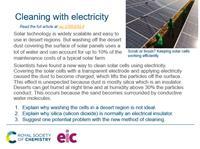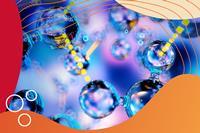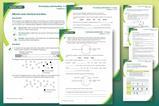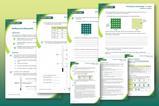How solar cells could be kept free of silica dust without the need for water, or a team of dusters
A new technique for electrostatically removing dirt from the surface of solar cells could remove the need to regularly wash them, potentially saving billions of litres of water every year in some of the driest regions on Earth.
Solar energy is perhaps the most appealing renewable technology as it is widely scalable and is readily available in arid regions that are sparsely populated. However, such regions are often dusty and this can rapidly obscure the surface of a solar cell. Dust can be removed by regularly washing the surface of the cells, but washing them accounts for up to 10% of the maintenance costs of a typical solar farm.
Some solar farms clean by dry scrubbing. This is less effective, however, and abrasion gradually reduces the transparency and therefore the efficiency of the solar cells.
In a new solution scientists have tried lifting the particles electrostatically, by covering the solar cell with a transparent electrode and causing the particles to become charged by an applied potential. This is unexpected because desert dust largely comprises of silica (silicon dioxide) – an insulator that should not become charged by contact with an electrode.
However, the researchers showed that at humidity above 30%, – which even most deserts achieve at night-time – the particles behaved in tests like steel grains, rather than insulating particles. The researchers concluded after further tests that, as silica is extremely hydrophilic it becomes surrounded by a shell of conductive water molecules.
Put this in context
Add context and highlight diverse careers with our short career videos showing how chemistry is making a difference and let your learners be inspired by chemists like Ryley, a solar technology engineer.
Read the full story in Chemistry World.
A one-slide summary of this article with questions to use with your 14–16 students: rsc.li/36xsv4q
Downloads
EiC starter slide Cleaning solar cells
Presentation | PowerPoint, Size 0.13 mbEiC starter slide Cleaning solar cells
Presentation | PDF, Size 0.16 mb
















No comments yet